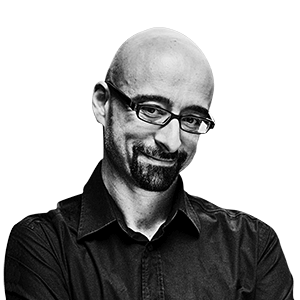Your next medical diagnosis might be done by artificial intelligence.
AI could even help predict mental health problems in teenagers


When we look back in a few years and assess the most significant technological and scientific advancement of the first quarter of the 21st century, it's quite possible that the winner will be the arrival of artificial intelligence in every home. From being a technology useful only in certain areas of science, it has evolved, with the emergence of LLCs (Extended Language Models) and generative artificial intelligence, into a tool that a large part of the population uses daily, sometimes even without realizing it.
And that's just the beginning. While we debate the good and bad uses of technology, which has many of both types, AI is infiltrating every corner of our lives. Medicine is one of the disciplines where it can be most disruptive, especially when it comes to improving diagnoses, both in terms of speed and accuracy and effectiveness. How can a computer compare to the clinical eye of a doctor with decades of experience? The key is that AI is better than us at extracting common patterns from large amounts of data, a process heavily involved in how we conclude that a person has a disease.
For example, in recent years several algorithms have been trained and refined so that they can recognize cancerous lesions in early stageswhich is when treatments can be most effective. Using the material doctors have available for each patient (blood tests, images, biopsies, etc.), plus the immense databases of cases that exist online, AI can detect tumors early in patients who don't yet have symptoms or are just beginning to experience them, and make a fairly accurate prognosis of the probability of recovery after treatment. Many of these algorithms still need to be validated and tested in larger populations, but others are already beginning to be tested in hospitals.
Also in mental health
Could AI also help with pathologies that are more difficult to detect, such as those related to mental health? We have traditionally largely ignored these types of illnesses. We find it difficult to talk about them, and they still carry a stigma that leads many of those experiencing them to hide it. But their social impact is immense: Up to 25% of adults (and 10% of children) may currently suffer from a mental health problem. The fundamental error perhaps lies in separating mental and physical health, as if they were two distinct things, when we know that the brain and body are parts of the same unit, not independent entities.
That's why the proposed use of AI is so interesting. an article recently published in Nature Medicine by the group led by Doctors Matthew Engelhard and Jonathan Posner of Duke University in North Carolina (United States). They describe a way not only to diagnose, but to predict problems of mental health in adolescents by leveraging the capabilities of an artificial neural network model (a type of AI machine learning that is inspired by how our brain works) to detect patterns.
Researchers used psychosocial questionnaires, medical histories, and brain scans of more than 11,000 children to train this AI. The result was an algorithm that could predict which volunteers would fall into the high-risk group for mental illness within a year. Of all the parameters the program computed, sleep disorders were the most strongly associated with this risk, even more so than having a family history of similar problems. This means that once the algorithm is validated and exposed to a larger dataset, it could be routinely applied to all adolescents to predict who is more likely to develop these types of illnesses, allowing for timely intervention and prevention. But perhaps the most interesting observation about the AI's diagnostic capabilities comes from a study published by Dr. Stefan Herzog's group. in the magazine PNAS A few months ago, a study demonstrated that algorithms work best by assisting doctors in diagnosis, not replacing them. Using thousands of real-world cases of all types of diseases, researchers found that the combination of humans and machines was more accurate than either alone. Therefore, an algorithm that diagnoses diseases should never be an independent tool or directed at the user, but should always be accompanied by professional supervision. This principle should be applied to all current uses of AI, including creative processes. Using AI as a tool can allow us to reach places we wouldn't dare to go alone, but treating it as a quick and cheap alternative to human contributions to knowledge and culture will only lead us to a bottomless pit of mediocrity and ignorance.
